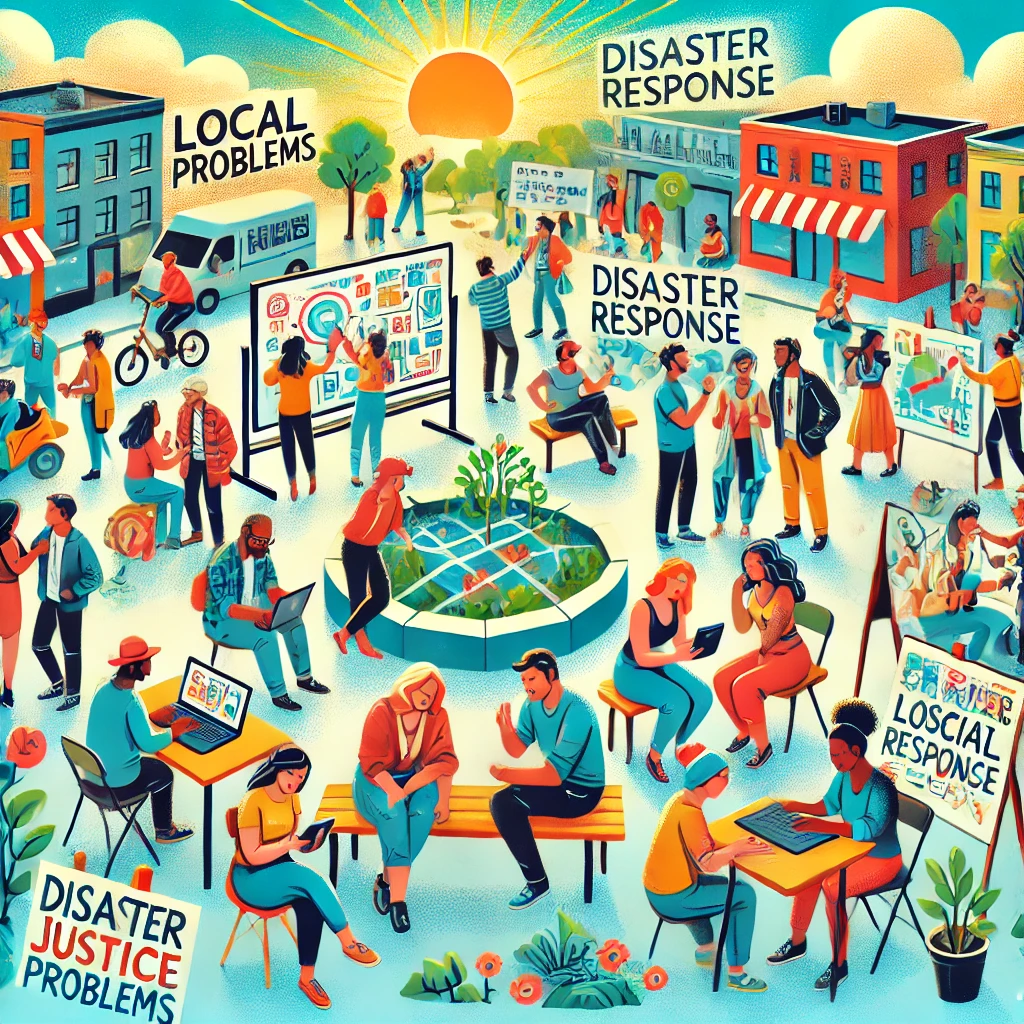In our digitally connected world, crowdsourcing has become a powerful way to tackle local issues. By utilizing the collective knowledge, resources, and skills of many people, communities can find creative solutions to problems that might otherwise remain unsolved. This method is changing how local governments, organizations, and citizens work together to improve their areas and promote sustainable growth.
What is Crowdsourcing?
Crowdsourcing involves asking a group of people, often through online platforms, to contribute ideas, resources, or work to solve a problem or complete a task. Unlike traditional approaches where solutions come from a central authority, crowdsourcing draws on the diverse views and skills within the wider community.
Why Crowdsourcing Works for Local Problems
Local issues are often unique to specific areas and need custom solutions that reflect the needs and values of the people affected. Crowdsourcing is particularly effective here for several reasons:
- Diverse Input: Involving a wide audience brings in various perspectives, which can lead to creative solutions that a single authority might miss.
- Cost-Effectiveness: Crowdsourcing can lower costs by relying on volunteer work, donations, or shared resources.
- Community Buy-In: When solutions are created together, residents are more likely to support and adopt them.
- Real-Time Feedback: Crowdsourcing platforms allow for instant feedback and ongoing improvements, keeping solutions relevant.
Examples of Crowdsourced Solutions to Local Problems
1. Urban Development and Design
Cities around the globe are using crowdsourcing to improve urban spaces. For example:
- Reykjavik, Iceland: The “Better Reykjavik” platform lets citizens propose and vote on ideas to enhance public services. Projects like better bike lanes and waste management systems have come from this platform.
- New York City, USA: Through participatory budgeting, residents decide how to spend parts of the public budget, ensuring funds go to the most urgent local needs.
2. Disaster Response and Recovery
Crowdsourcing plays a crucial role during crises:
- Ushahidi Platform: Initially created in Kenya to map reports of violence, Ushahidi has been used worldwide for disaster response, such as tracking flood risks and coordinating aid.
- Crisis Mapping: After the 2010 Haiti earthquake, volunteers used satellite images and crowd-submitted reports to map affected areas, speeding up rescue efforts.
3. Environmental Conservation
Communities are addressing environmental challenges through crowdsourced efforts:
- Clean-Up Drives: Platforms like Clean Swell encourage people to log litter collected during beach cleanups, creating data that informs larger environmental policies.
- Citizen Science Projects: Initiatives like eBird allow individuals to report bird sightings, helping scientists track biodiversity and migration patterns.
4. Social Justice and Inclusivity
Crowdsourcing helps amplify marginalized voices and promote inclusivity:
- Black Lives Matter Mural Projects: Artists and residents work together to create public art that raises awareness about social justice issues.
- Local Accessibility Audits: Apps like Wheelmap crowdsource information about wheelchair accessibility, empowering disabled individuals to navigate urban spaces more effectively.
How to Implement a Crowdsourced Solution
If you’re considering crowdsourcing to address a local problem, here are key steps to ensure success:
- Identify the Problem Clearly: Define the challenge and explain its importance to the community.
- Choose the Right Platform: Select an online platform that suits your needs for gathering input and feedback.
- Engage the Community: Reach out to community members and encourage participation.
- Monitor and Evaluate: Continuously track progress and make necessary adjustments based on feedback.
By following these steps, communities can effectively leverage crowdsourcing to solve local problems, ensuring solutions are innovative, cost-effective, and widely supported.
Choosing the Right Platform
To connect with your audience, select tools such as social media channels, community forums, or dedicated applications.
Engaging the Community
Foster active participation by organizing workshops, conducting online surveys, or hosting hackathons.
Facilitating Collaboration
Promote interaction and teamwork by offering platforms for brainstorming and discussions.
Implementing and Iterating
Test the proposed solutions, collect feedback, and refine them based on the participants’ input.
Challenges and Limitations
Although crowdsourcing holds great promise, it has its challenges:
Digital Divide
Access to the internet or digital tools is not universal, which can exclude certain groups.
Quality Control
Verifying the accuracy and practicality of crowdsourced ideas can be labor-intensive.
Sustained Engagement
Keeping the community involved over the long term demands ongoing effort and incentives.
The Future of Crowdsourced Solutions
With technological advancements, the potential for crowdsourced solutions is expanding. Innovations such as blockchain may improve transparency in participatory budgeting, and artificial intelligence could assist in analyzing and prioritizing ideas more efficiently. As awareness of crowdsourcing increases, communities will become better at utilizing collective intelligence for meaningful impact.
Conclusion
Crowdsourcing is a powerful method that enables communities to shape their own futures. By tapping into the collective creativity and energy of local residents, it provides practical, inclusive, and innovative solutions to local challenges. As more communities adopt this collaborative approach, the journey toward sustainable and equitable development becomes more achievable.

